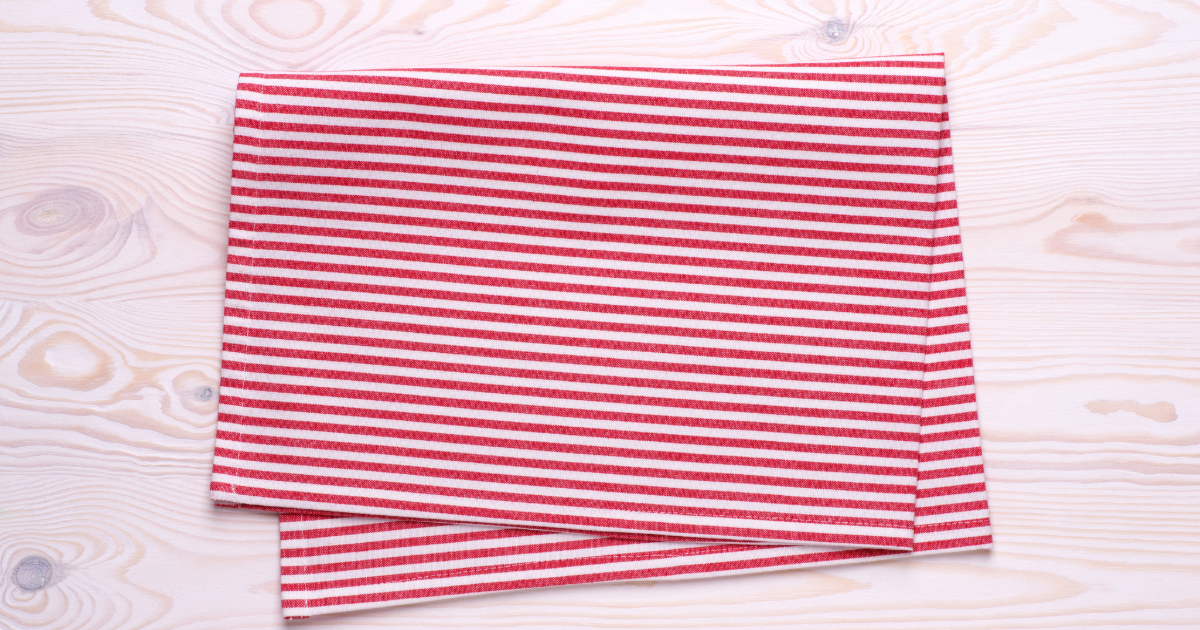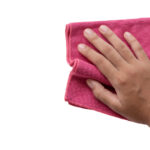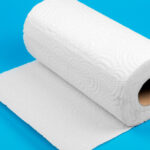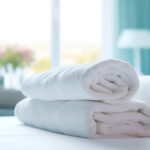Tea towels and cheesecloth – two common kitchen linens that seem similar at first glance.

However, they have some key differences in terms of purpose, fabric, absorbency, and ideal uses.
Purpose and Origins
Tea towels get their name from their original 18th-century use – lining tea trays and drying teaware. Over time, their versatility made them a kitchen staple for tasks like:
- Polishing dishes and glassware
- Lining baskets
- Covering food
- Drying ingredients
Cheesecloths emerged as a tool for wrapping and straining curds when making cheese at home. Cheesemakers would tie spices and herbs in cheesecloth before adding to milk.
Beyond cheesemaking, common uses include:
- Straining stocks and broths
- Filtering liquids
- Making herb/spice sachets
- Crafting Halloween decorations
Key Takeaway: Tea towels originated as linens to dry fine dishware, while cheesecloths developed as strainers and wrappers in cheesemaking.
Fabric Composition and Weave
The fabric composition and weave are key points of difference:
| Tea Towel | Cheesecloth | |
|---|---|---|
| Fabric | Cotton, linen | Cotton muslin |
| Weave | Tightly woven | Loose, open weave |
| Weight | Heavier | Very lightweight |
Tea towels have a smooth, close-knit weave that leaves no lint or residue. Made of 100% cotton or linen, they feel soft and gentle on dishes and hands.
Cheesecloth has wide gaps between the crosswise and lengthwise yarns for optimal airflow and filtering. The loose weave comes in different grades – measured in threads per inch. Finer grades (90 threads/inch) filter better than coarse ones (10 threads/inch).
Key Takeaway: Tea towels feature tightly woven natural fabrics while cheesecloth has a loose, gauzy open weave for straining and airflow.
Absorbency
The weave greatly impacts absorbency:
- Tea towels readily soak up moisture thanks to the tightly packed cotton fibers. Although not overly thick, they can absorb a fair amount of water.
- With wider spaces between the threads, cheesecloth does not absorb liquids well. It is more suited for draining whey or wrapping food.
Key Takeaway: The tighter weave makes tea towels much more absorbent than cheesecloth.
Durability
For routine kitchen use, tea towels tend to be more durable. Dense cotton construction stands up well to frequent washing, drying, and handling. Cheesecloth frays more readily – especially lower grades.
However, even high quality tea towels stain over time when used for messes, grease, etc. Many cooks treat them as somewhat disposable.
On the flip side, pristine cheesecloth can be gently reused after straining clear stocks or broths. Avoid abrasive scrubbing.
Key Takeaway: Tea towels withstand abrasion and wear better thanks to sturdier fabric. But discoloration from use limits lifespan for both.
Ideal Uses Compared
With the attributes above kept in mind, here is how tea towels and cheesecloths excel in different kitchen applications:
| Use Case | Best Choice | Why? | |
|---|---|---|---|
| 1 | Polish and dry tableware | Tea towel | Lint-free weave prevents streaks |
| 2 | Cover rising dough | Tea towel | Absorbs moisture yet allows airflow |
| 3 | Strain stocks and broths | Cheesecloth | Lets liquid pass through while retaining solids |
| 4 | Wrap/store cheese | Cheesecloth | Allows cheese to breathe while keeping shape |
| 5 | Herb and spice sachets | Cheesecloth | Encases contents; permeable to impart flavors |
| 6 | Filtering juices, milks | Cheesecloth | Loose weave clarifies liquids beautifully |
While specialized for certain jobs, both towels can pitch in when needed. For example, a sturdy tea towel can strain thicker liquids in a pinch.
Key Takeaway: Tea towels shine for gentle drying and coverage uses. Cheesecloth excels as a permeable strainer, wrapper, and flavor pouch.
Cleaning and Care
General care to retain integrity and absorbency:
- Wash before first use
- Use mild detergent
- Machine wash cold with like colors
- Avoid bleach
- Line or flat dry away from direct sun
- Trim loose threads
Tea towels tend to withstand frequent washing well. Cheesecloth needs gentler handling – skip the machine wash and scrubbing.
Retire heavily stained tea towels so they don’t spread grease and grime. Replace cheesecloth if it develops large holes from overhandling.
Key Takeaway: Handle cheesecloth delicately; tea towels withstand normal laundry better. Monitor for damage in both.
FAQs
Can you substitute one for another?
In a pinch, yes. For best results match the thickness. Lightweight cheesecloth can work for gentle glassware drying. Sturdy tea towels can filter thicker liquids.
Are flour sack towels the same as tea towels?
Very similar. The absorbent yet lint-free cloth makes an all-purpose alternative if 100% cotton.
What other fabrics work like cheesecloth?
Other fabrics allow straining/airflow like cheesecloth: muslin, cotton gauze, thin linen tea towels. None filter quite as perfectly however.
Conclusion
Tea towels and cheesecloth serve distinct culinary roles. But both cotton helpers improve cooking and expand what’s possible in your kitchen.
Their scrubby terry and chambray cousins help round out a versatile textile toolkit as well.







